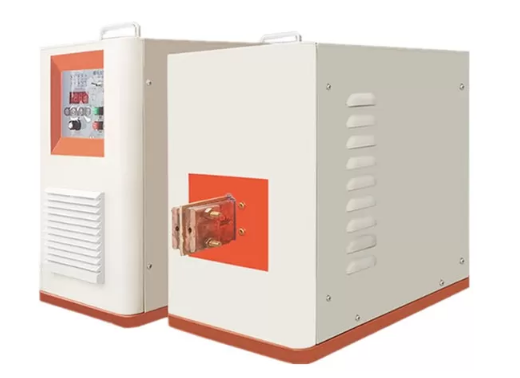Induction heating is a technique that uses electromagnetic induction to heat conductive materials, such as metals and semiconductors. The heating occurs due to eddy currents generated within the material by a rapidly alternating magnetic field. This magnetic field typically operates at frequencies between 10 kHz and 1 MHz, with power levels adjustable to control the heating rate. Temperatures can range from as low as 100°C (212°F) to as high as 3000°C (5432°F), making it suitable for a wide variety of applications. Induction heating can be applied in short processes lasting less than a second or in continuous processes that span months.

The Benefits of Induction Heating over other heating methods, such as:
* Efficient, with up to 98% of the energy being converted to heat.
* Fast, with the material typically reaching the desired temperature in seconds.
* Precise, with the heating area being limited to the area within the induction coil.
* Safe, with no emissions, fumes, or flame.
Extended life of fixturing due to precise heating.
Induction heating is a versatile and efficient heating method used in a wide variety of applications. It is a safe, precise, efficient, and clean process that offers several advantages over other heating methods.
Induction heating is used in domestic and commercial cooking and in many industrial applications, such as melting, heat treating, preheating for welding, brazing, soldering, curing, sealing, shrink fitting, and in research and development.
Induction heating is used in a wide variety of applications, including:
* Metalworking, such as hardening, annealing, and welding.
* Plastics processing, such as melting and forming.
* Food processing, such as cooking and pasteurization.
* Medical applications, such as surgical sterilization and cancer treatment.
Difference between Induction Heating and Resistance Heating
Heating is a process of increasing the temperature of a body to an acceptable level by using thermal energy. The mechanism involved in heating is generally referred to as a heating system.
When the process of heating is performed by using electric current, i.e. the electric current is converted into heat energy by employing a suitable mechanism, it is called electric heating. The principle behind electric heating is the heating effect of electric current, which states that when an electric current flows through a conducting medium, the medium resists the flow of this current, resulting in a rise in temperature of the medium, i.e. the heating of the medium.
Today, different methods of electric heating are available, like resistance heating, induction heating, arc heating, dielectric heating, etc.
Basis of Difference | Induction Heating | Resistance Heating |
Definition | The type of electric heating in which object is heated by the process of electromagnetic induction is called induction heating. | The type of electric heating in which object is heated due to only the resistance of the material of the object is called resistance heating. |
Principle of heating | The electromagnetic induction is the principle behind the induction heating. | The power loss in resistance (I2R loss) is principle used in the resistance heating. |
Types | There are two types of induction heating namely, direct-induction heating and indirect induction heating. | There are two types of resistance heating namely, direct resistance heating and indirect resistance heating. |
Current carrying part | In case of induction heating, the electric current flows through a coil of an electromagnet of the induction heater. | In resistance heating, the electric current flows through a wire of high resistance to produce heat. |
Heating part | In induction heating, the heat is directly produced in the object to be heated by the electromagnetic induction. | In resistance heating, the heat is produced by a resistance wire and then transferred to the object to be heated. |








